Low Tire Pressure Light Is On But Tires Are Fine? (4 Causes)
Warning lights spell trouble, like the TPMS system for monitoring tire pressure levels. But surprisingly, the TPMS light can illuminate even with properly inflated tires and no puncture from a screw or nail.
Keep reading to see what specific causes can trigger the TPMS light to come on, without a tire actually being low on air, whether you can continue driving, and how to locate the offending TPMS sensor.
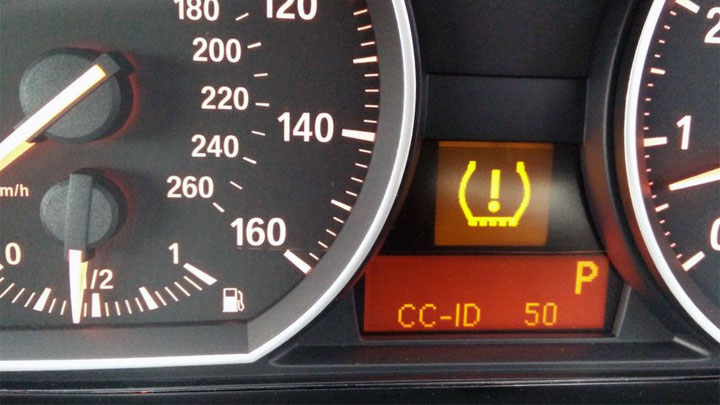
Related: Is It Ever OK To Drive On a Flat Tire?
Reasons Your TPMS Light Is On
There are several different reasons that a vehicle’s TPMS Light could be on, though each tire is inflated to the correct air pressure. The following are several of the most common of these instances.
#1 – Damaged Sensor
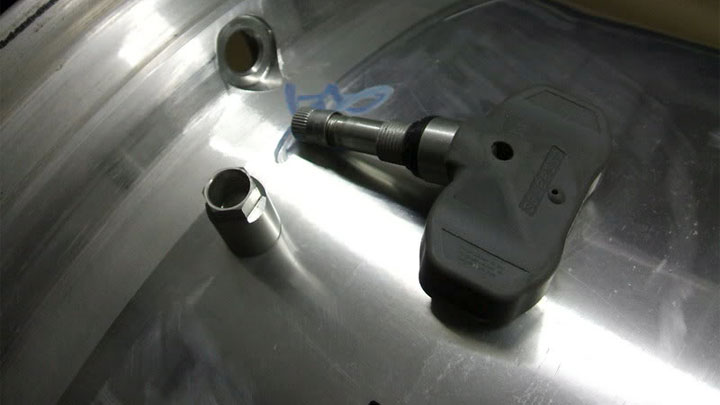
Under certain circumstances, a tire’s TPMS Sensor can become damaged, thereby compromising its ability to function as intended.
This is especially likely if such issues arise immediately following tire replacement, as special mount and dismount procedures are required to prevent sensor damage.
#2 – Dead Sensor Battery
TPMS sensors used by direct monitoring systems utilize integrated batteries for sustained use. Though these batteries are generally long-lived, they do tend to fail with time.
This prevents feedback from being delivered to a vehicle’s TPMS receiver, thereby illuminating the system’s warning light.
#3 – Faulty TPMS Receiver
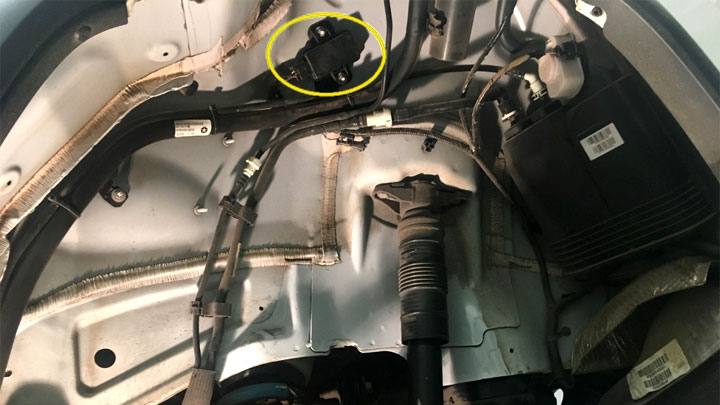
Though much rarer than sensor failure, a vehicle’s TPMS receiver can actually fail, preventing air pressure-related data from being correctly received and calculated. This anomaly causes a vehicle’s TPMS light to illuminate, no matter the pressure in each individual tire, or the state of the vehicle’s sensors.
#4 – Loss Of Traction (Indirect)

Some of the earliest indirect monitoring systems were known for an especially quirky issue. Since these systems relied upon the use of wheel speed sensor data, any loss of traction could lead to the illumination of a vehicle’s TPMS light.
This often caused a great deal of confusion, as motorists attempted to decipher the cause behind such faults.
Can I Drive With the TPMS Light On?
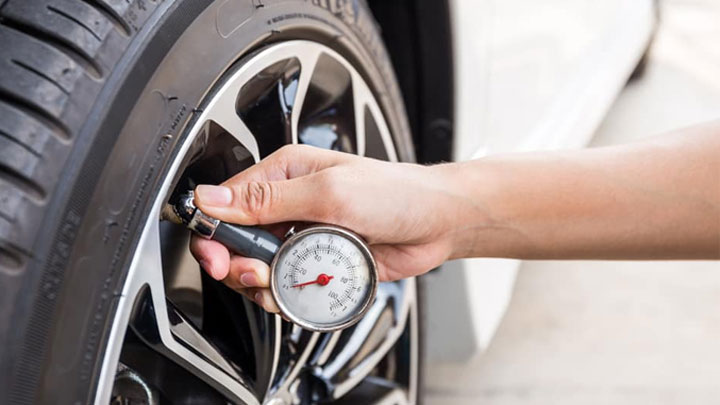
Yes, you can indeed drive with your vehicle’s TPMS light on. However, doing so is not advised unless your tires have been inspected by a qualified professional. In most cases, the presence of such a light indicates low tire pressure.
However, if your tires are full of air, and your tire pressure light won’t go off, then you are likely dealing with a sensor/receiver issue.
In such instances, it is generally safe to proceed as necessary, until sensor replacement can be scheduled and conducted. However, it is worth mentioning that your vehicle’s ability to detect and report low tire pressure will be compromised until a proper repair is made.
This stems from the fact that the typical TPMS warning light will remain illuminated, as long as the fault remains. In turn, no new illumination of this light will occur, if a real loss in pressure were to take place.
If you do decide to drive with your vehicle’s TPMS light on, it is advisable to manually check your vehicle’s tire pressure with a tire gauge. If any doubts remain regarding the health of your vehicle’s tires, discontinue all further driving at once, until the problem itself can be remedied.
See Also: How Long Can You Drive On a Spare Tire?
How TPMS Works
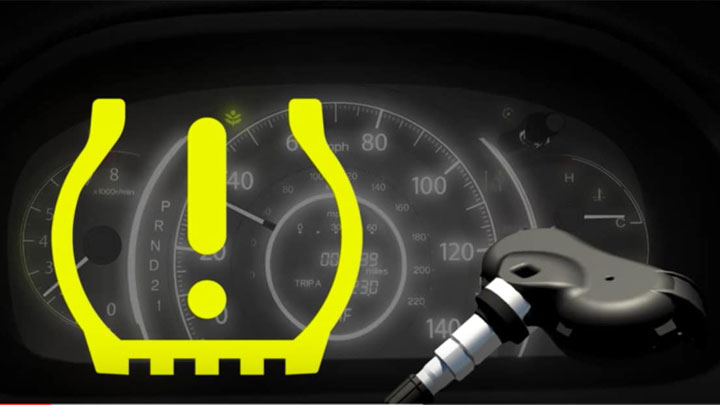
The general concept behind modern TPMS technology is to inform a driver of the presence of one or more underinflated tires on their vehicle before such tires become a safety hazard. This technology is mandatory on all 2007 and newer vehicles sold in the United States.
The matter of monitoring a vehicle’s tire pressure is accomplished in one of two ways, the first of which is known as direct monitoring. On the other hand, some manufacturers also utilize indirect monitoring for the same purpose.
Direct Monitoring
Vehicles utilizing direct TPMS rely upon a full set of valve-stem mounted pressure sensors, which correspond to an onboard receiver module. These sensors record and relay each tire’s pressure in real time, presenting a driver with such data on an ongoing basis.
TPMS units of this design tend to be extremely accurate, and are featured on the vast majority of new vehicles today.
Indirect Monitoring
In contrast to direct TPMS, indirect systems of this nature do not feature independent pressure sensors within each tire. On the contrary, vehicles featuring such warning systems rely upon the use of a vehicle’s speed sensors to determine relative tire pressure.
The theory behind this matter is that under-inflated tires rotate at a slightly different speed than fully inflated tires. Systems of this type tend to be somewhat less accurate than direct TPMS and are less common overall.
How Do I Know Which TPMS Sensor is Bad?
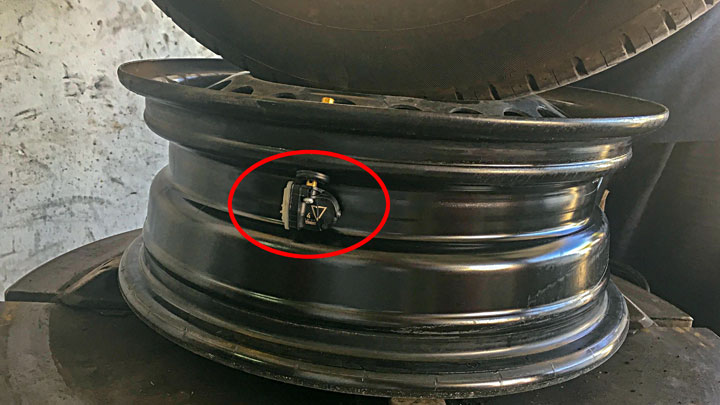
Many drivers question how to tell which of a vehicle’s TPMS sensors are bad. Luckily, this is relatively easy to determine.
Many of today’s newest vehicles now feature an integrated data display that, when toggled through, provides a breakdown of each tire’s pressure. In this case, locating the problematic tire or sensor is as easy as reading a display screen, while looking for the highlighted value.
In other instances, a handheld TPMS scanner or automotive scan tool with TPMS reset ability will be needed to determine which sensor is failing to provide feedback.
Many auto parts stores and vehicle service centers will provide such testing for free as a matter of convenience, saving you the price associated with purchasing a diagnostic tool of this type.
Can I Disable the Tire Pressure Monitoring System?
While you are likely to find many methods of disabling, tricking, or bypassing your vehicle’s TPMS system on the web, doing so is not advised.
The presence of such systems is mandated by federal law, and is there to achieve a higher level of consumer safety. Much like other vehicle safety systems, a car’s TPMS functionality is best left alone.
How to Reset the Tire Pressure Light

After determining and correcting the root cause of your vehicle’s TPMS light, the next matter of business involves resetting the light itself. In the majority of cases, this process is far easier than one might expect, and can be completed in minutes.
The following are several examples of how to reset a vehicle’s TPMS light.
Toyota Models
The TPMS light on many Toyota vehicles can be reset by accessing their integrated reset button. This procedure is as follows.
- Turn Key To “ON” Position: First, turn your vehicle’s key to the “ON” position, without starting the engine itself.
- Locate Reset Button: Next, locate the vehicle’s TPMS reset button. This button is most often found beneath the steering wheel.
- Hold Reset Button: Finally, you will depress this button, holding it until the vehicle’s TPMS light blinks 3 times. You will then start your vehicle, before letting it idle for a period of 5-10 minutes.
General Motors Models
The vast majority of GM vehicles, especially featuring first-generation TPMS technology, required the use of a calibrated TPMS tool for rest. The following is one of the most common of all GM reset procedures.
- Depress Key Fob Buttons: To initiate the relearn procedure, depress the lock and unlock buttons on your key fob simultaneously. Hold these buttons for a period of 3-5 seconds.
- Listen For Honk: If step one is completed correctly, your vehicle’s horn will honk, signaling the beginning of the reset procedure.
- Relearn Each Tire: You will now use a relearn device to analyze each sensor, beginning at the left-front wheel. Continue around the vehicle in a clockwise pattern while checking each wheel. Upon checking the final tire, your vehicle’s horn will honk twice, signifying the end of the procedure.
Honda Models
The process to reset the TPMS on Honda vehicles differs according to the age of the car.
For 2016 models and newer with a touchscreen display:
- Go to the home screen
- Select settings
- Click TPMS calibration
- Select “Calibrate”
For older model Honda vehicles without a touchscreen display:
For old Honda models without touch display, use steering wheel buttons and calibrate through these steps:
- Use the steering wheel buttons: buttons should be located on the left side of the steering wheel.
- Select Menu
- Select ‘Customize Setting’
- Choose TPMS Calibration
- Click Initialize
- “Check Emission System” Light On In Your Honda/Acura? - May 6, 2024
- P06dd Code (Symptoms, Causes, and How to Fix) - May 3, 2024
- 5 Symptoms of an EVAP Leak (and Repair Cost) - Apr 27, 2024

Had a low pressure warning with indirect system. Filled up all the tires where OK.
Reset, but next day at end of trip again warning light.
Apeared to be a hanging brake on left behind.
Solved that by a new brakeclaw, and problem solved.
My explanation is that the hanging brake produced heat, wich transported trough the rimm to air in tire. Gave lesser deflection of tire. Gave larger rolling circumference, so difference between R and L on rear axle. Gave difference in rotation speed wich was noticed by the ABS sensors, and explained as one tire with low pressure, but in fact the other way around.
So if lowpressure warning with indirect system, and no flat tire, feel the rimms. If you burn your fingers at one rimm, its a stuck brakeclaw.
Are you sure the light was triggered because of heat? I would think that a dragging brake would actually cause that tire to rotate slower than the others. Depending on the braking force applied, this might sound like some occasional, subtle scrubbing, instead of squealing like a tire that’s sliding.